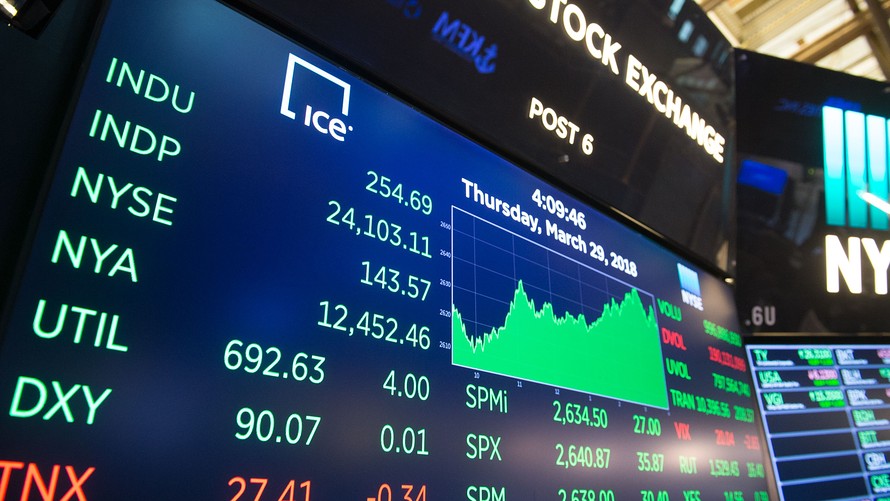Average Stock Market Return
- Posted on June 02, 2020
- Financial Terms
- By Glory

The term ‘average return’ refers to a mathematical average of a series of return gotten over a given period of time. An average return can be calculated like a simple average return wherein, a set of numbers are added together and the sum is divided by the count of numbers.
According to historic records, the stock market average return has been 10%. However, this percentage is not always so as factors like inflation causes it to vary from year-to-year. The market’s 10% average return is for the headlines, whereas in reality, the average could either be 2% or 3% less due to inflation. The returns between 1926 and 2014 the average was at 8% to 12% six times only. Other times, the average returns were either lower or much higher due to the volatile state of the market.
Measuring Average Stock Market Returns
The average stock market returns can be measured over different time frames using market benchmarks such as the Dow Jones Industrial Average and S&P 500 Index.
The Dow Jones Industrial Average is an index that comprises of 30 major large-cap industrial corporations, including tech companies. Although the index remains its “industrial” status, many of the companies listed on it are hardly industrial in nature. The only original member of the Dow Jones is General Electric. The index includes big companies like Microsoft, Boeing, Walmart, and Apple.
The S&P 500 is a market-cap-weighted index that comprises of the 500 largest U.S. companies. Only companies with the largest market cap as shown by the total number of shares of the company’s stock outstanding multiplied by the market price for the stock.
The two mentioned indexes are the most quoted and influential benchmarks in the stock market. They are also often used as a market proxy. Besides the Dow Jones Industrial Average and the S&P 500, there are other stock market benchmarks that represent mid-cap, small-cap, foreign stocks, and other investments. These benchmarks are useful in comparing stock performance or the performance of ETFs or mutual funds before investing.
While it is important to look at past performances of stocks, mutual funds, ETFs, or any other type of investment, it is also important to know that past performance does not determine future performance.
What kind of returns should investors expect?
A big investor like Warren Buffett of Berkshire Hathaway says that investors should expect at least a 6-7% annual return in the stock market yearly. According to Buffett, the S&P 500 surged 18% on a year average between 1982 and 1999. Based on his analysis of the average stock market return he said:
“The economy, as measured by gross domestic product, can be expected to grow at an annual rate of about 3 percent over the long term, and inflation of 2 percent would push nominal GDP growth to 5 percent.”
Adding that stocks will most likely rise at “about that rate and dividend payments will boost total returns to 6 percent to 7 percent.”
While the stock market remains unpredictable with no guarantees, the 10% average has become somewhat of a benchmark that gives investors an insight into how the market is performing. The stock market comprises of stock market indexes that track the performance of company stocks on the market. For example, the S&P 500 index fund includes 505 of America’s largest publicly traded companies. It is also considered as the benchmark measure for annual returns.
What to know when calculating the average market returns
It would be inappropriate to use past average returns to predict the market in the future as certain economic factors can influence the returns. However, there is one rule that applies to predict the average stock market returns. It states that: The higher the recent returns, the lower the future returns. The lower the recent returns, the higher the future returns.
When calculating how much annual return to expect from your stock market investment, it is safer to use an average annual return of 6-7%. However, a 10% return is the national average. That way, you’d be prepared for either the worst or the best. Some years the average market return is lower and in other years it is usually very high.
What is the historical average stock market return?
According to the data available, and considering all the S&P 500 companies that are 500 in numbers. The S&P 500 sector is the benchmark that is used to measure the annual market return. Also, the term market means the S&P 500.
Is the average stock market return really average?
This is a tough one to answer because it all depends on how the average stock market return is calculated. While the overall acceptable market return number is 10%, a 12 month window return is usually not up to 10%. In some year it could be 4 percent, then next year 35% and another year it could be - 6%. This can happen as a result of market volatility. Volatility is how the market fluctuates up or down.


Be the first to comment!
You must login to comment